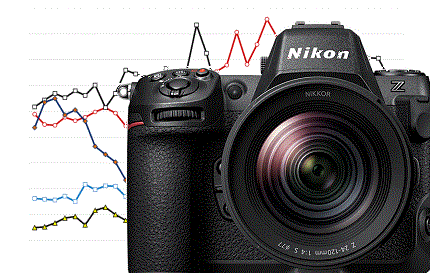The Sony E mount is an inferior design for FX optics. It's designed for APC. It is cursed to struggle to implement high performance IBIS on a FX Camera.
That's a common claim. But is it true? It might be better to say that in hindsight it is not a good design for digital full frame sensors. But I doubt it was "designed for APS-C".
The E mount was introduced in 2010 for the
APC NEX cameras. Perhaps this correlation is misleading? I'm not aware of contradictory evidence.
The history of camera mount development is obscure and incomplete. And Japanese companies are secretive.
It might also be better to add some context around this. There's a difference between film and digital. Sony FE/E is 46mm throat diameter. Nikon F is 44mm. So the Sony is wider.
Apparently, E underscores the Eighteen mm throat depth, which was obviously designed for Mirrorless ILCs
One would hardly say that the F mount was designed for APS-C.
F-mount is the 1960 vintage when 35mm film was the relatively new standard for smaller format cameras
Minolta SR and Leica M mounts are also 44mm. These mounts were certainly not designed for APS-C.
In the era of DSLRs the F mount was plenty wide enough, even if not optimal, for digital full frame sensors. Mirrorless is a different beast. The Leica M only has a flange distance of 28mm. If I recall correctly, early Leica digital cameras struggled with vignetting and Leica had to redesign the microlenses that covered the sensor to overcome this issue. This is not an issue with film.
You have Nikon tilt/shift lenses for the "tiny" Nikon F mount that project an image circle far larger than needed to cover a full frame format, and sharp corner to corner.
There are several statements by Nikon engineers emphasizing how the Z Mount frees up design constraints, for more compact, sharper lenses particularly edge to edge etc. We see the benefits in the new 14-24 f2.8S and 14-30 f4S for example.
Also the 400 f4.5S with its novel optical design likely leverages aspects of the Z Mount architecture for the rear elements.
There are also significant benefits of a the wider gape to AF communications besides IBIS.
So while I may agree with you that
46mm is an inferior design for a digital mirrorless camera,
This is the primary factor, particularly compared to the architecture of the Canon RF and Nikon Z Mounts.
I don't know that I would agree that 46mm means that the mount was designed for APS-C.
The pertinent question prior to 2010, is whether Sony had even planned to use the FX sensors when it originally introduced the E mount (?) The tightening of the 49.7mm gape of the A mount to a 46mm gape of the E mount suggests a strategic mistake at the time if FX sensors were in its future.
Nikon had the final call, and its Z Mount the optimal dimensions of shallowest Throat of 16mm with wide gape of 55mm, to which the Canon RF is closest with 20mm and 54mm, respectively.
Ironically, the FX A900 - Minolta A mount - had been released in 2008, although the Leica M9 was the first mirrorless Camera announced September 2009.
Anyways, by 2012, Sony had already locked itself into the E mount with successful lens production, although the Pro lenses were released only in 2016.
"....What nobody predicted was the demise of the DSLR and there was a good reason for this: camera sales were at an all-time high. Every manufacturer designed their systems to sit alongside professional DSLRs (where they had them) and Sony was no exception...."
https://petapixel.com/2023/05/01/sony-didnt-have-a-clever-mirrorless-plan-to-fool-canon-and-nikon/



